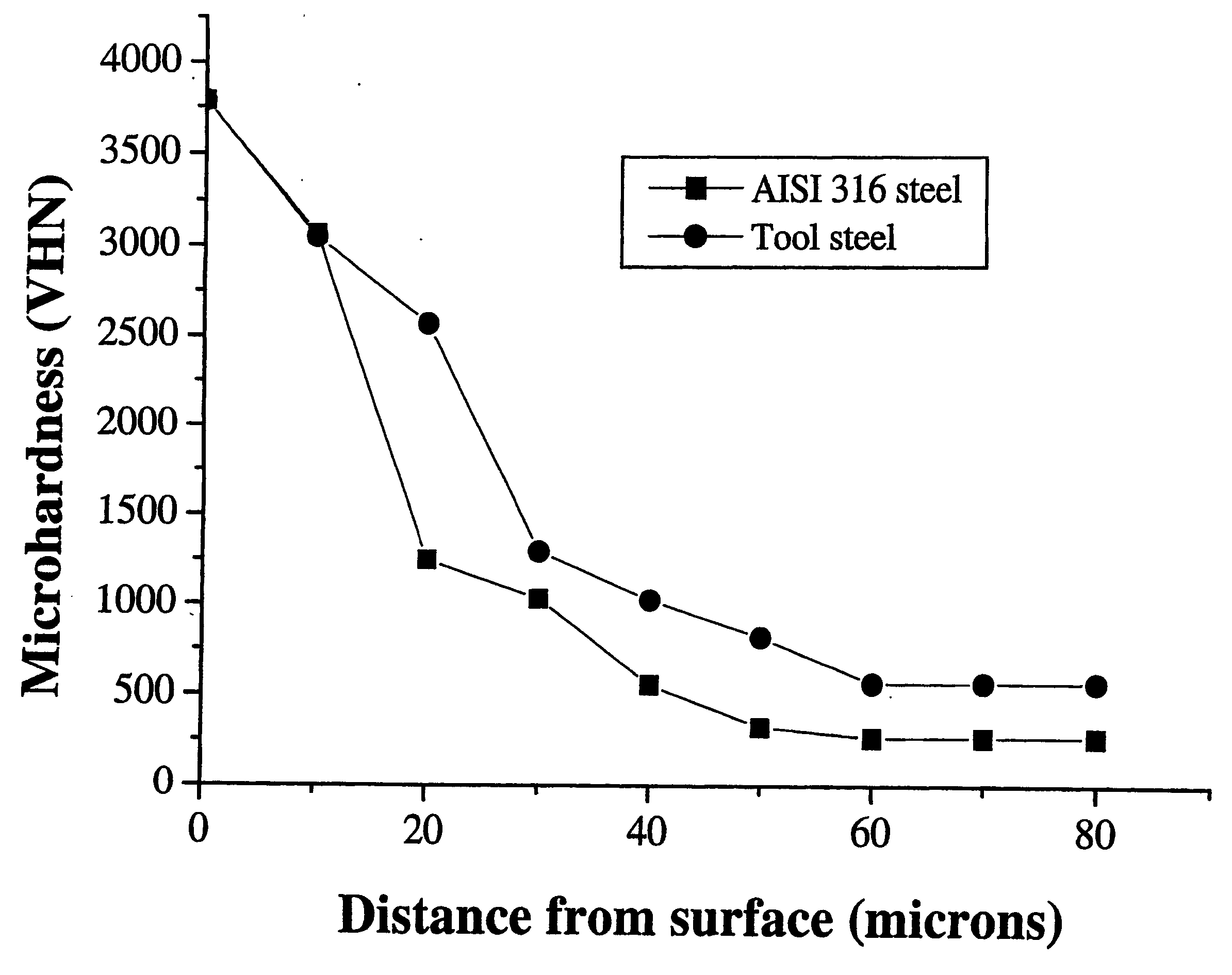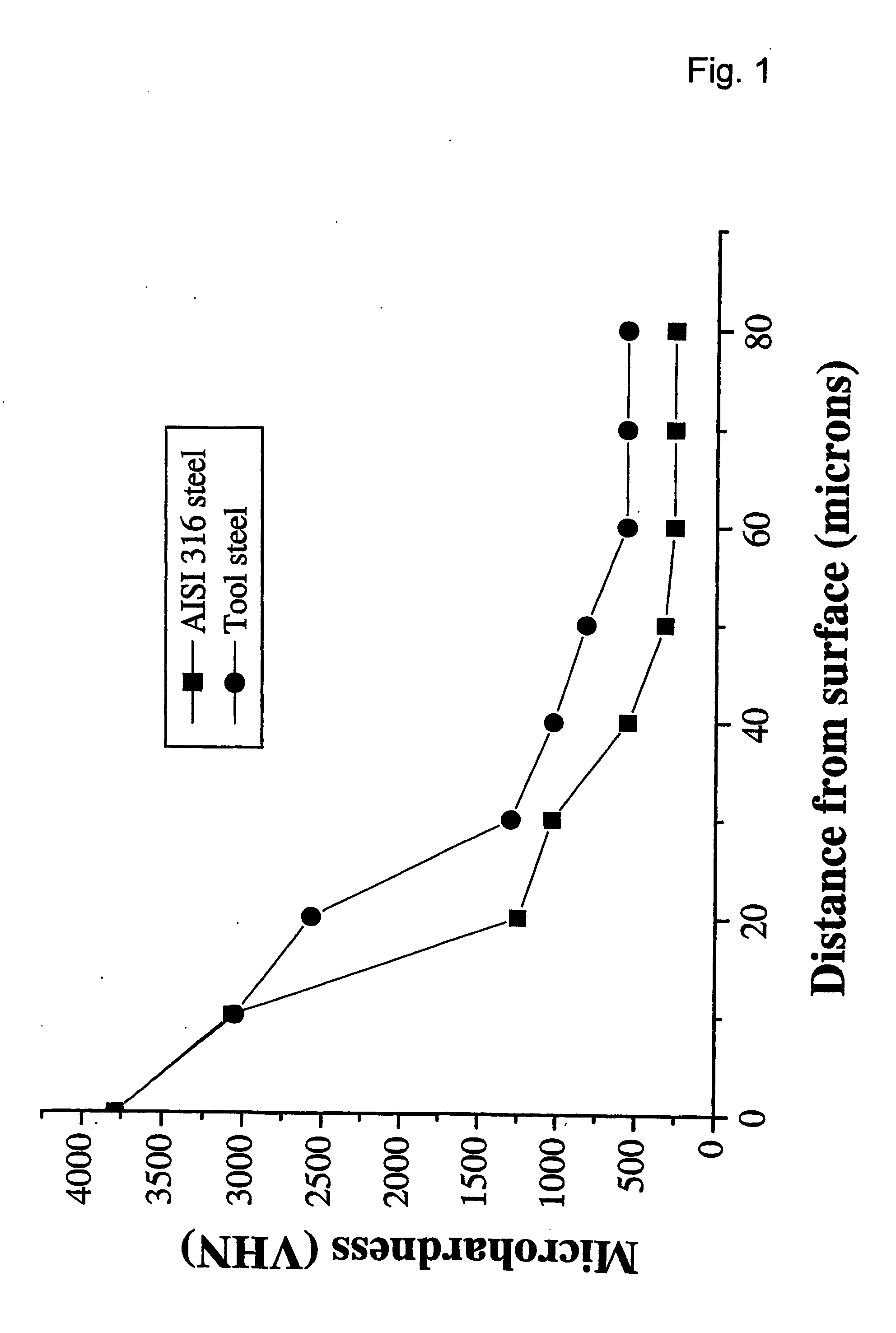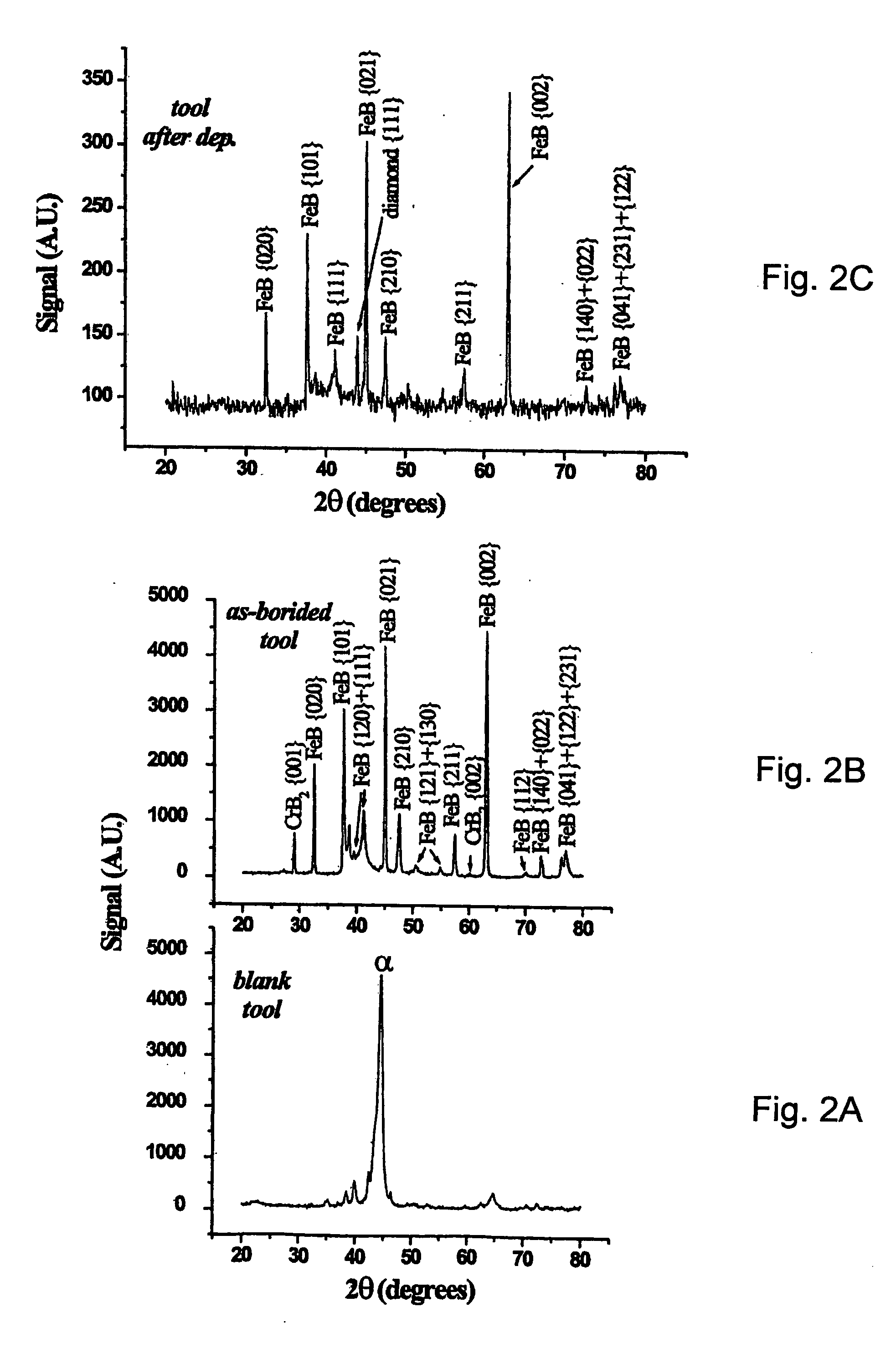Method of forming a diamond coating on an iron-based substrate and use of such an iron-based substrate for hosting a CVD diamond coating
a diamond coating and iron-based substrate technology, applied in the direction of superimposed coating process, chemical vapor deposition coating, coating, etc., can solve the problems of high interface stress during cooling down from deposition, relatively expensive substrates, and high interface stress within the coating, enhancing the likelihood of coating delaminate, and reducing adherence to the substrate
- Summary
- Abstract
- Description
- Claims
- Application Information
AI Technical Summary
Benefits of technology
Problems solved by technology
Method used
Image
Examples
example 1
[0067] A ferritic tool steel with a matrix Vickers hardness of 550 is boronized by a packed boronizing process. Hereto is a mixture of boron carbide, silicon carbide and potassium fluorocarbide used. Boronizing is carried out at a temperature of 950° C. for 1 hour and alternated by annealing for about 15 minutes at a temperature of 650° C. just under the temperature at which both austenite and ferrite are stable. This cycle of boronizing and annealing is carried out four times after which the tool steel substrate is cooled down in air.
[0068] X-ray diffraction investigations show the presence of significant amounts of Fe2B and CrB4 and small concentrations of FeB. SEM investigations show the presence of an outer layer of about 40-50 μm thick with needle shaped borides. Also a high fraction of interdendritic spherical boride particles is observed. Such a microstructural state generally results from a boron concentration which decreases from the surface of the outer layer towards the ...
example 2
[0070] An AISI 316 steel substrate with a matrix Vickers hardness of 260 is boronized by a packed boronizing process. Hereto is a mixture of boron carbide, silicon carbide and potassium fluorocarbide used. Boronizing is carried out at a temperature of 950° C. for 1 hour and alternated by annealing for about 15 minutes at a temperature of about 600° C.-650° C. where the diffusivity of boron is very low as compared to interstitials such as carbon. This cycle of boronizing and annealing is carried out four times after which the austenitic steel substrate is cooled down in air.
[0071] X-ray diffraction investigations show the presence of significant amounts of FeB, Fe2B and Cr5B3 phases. SEM investigations show the presence of an outer layer of about 40-50 μm thick with layers of borides with planar growth interfaces. The Vickers hardness drops from about 3800 VHN at the surface of the boronized outer layer to about 1250 VHN at 20 micrometer from the surface to about 270 VHN close to th...
example 3
[0073] Two block-shaped AISI type 316 stainless and two tool steel samples of dimensions 21×14×6 mm3, are used as substrates. The tool steel (H11) samples contain 0.42 wt. % C, 4.47 wt. % Cr, 1.13 wt. % Mo, 0.13 wt. % W, 0.34 wt. % V and balance Fe, whereas the AISI type 316 stainless steel samples contain 0.78 wt. % C, 16.90 wt. % Cr, 2.00 wt. % Mo, 10.60 wt. % Ni, 1.78 wt. %, 0.07 wt. % V and balance Fe. These steel samples are borided by means of a pack boriding process using an interrupted treatment. For a first set of an AISI type 316 stainless steel sample and a tool steel sample a mixture of 8% boron carbide (B4C), 5% alumina (Al2O3), 5% potassium fluoroborate (KBF4) and 82-85% silicon carbide (SiC) is used. For a second set of an AISI type 316 stainless sample and a tool steel sample a mixture of 5% boron carbide (B4C), 5% alumina (Al2O3), 5% potasium fluoroborate (KBF4) and 82-85% silicon carbide (SiC) is used. Boriding is carried out at a temperature of 950° C. for 1 hour ...
PUM
| Property | Measurement | Unit |
|---|---|---|
| Temperature | aaaaa | aaaaa |
| Temperature | aaaaa | aaaaa |
| Temperature | aaaaa | aaaaa |
Abstract
Description
Claims
Application Information
 Login to View More
Login to View More - R&D
- Intellectual Property
- Life Sciences
- Materials
- Tech Scout
- Unparalleled Data Quality
- Higher Quality Content
- 60% Fewer Hallucinations
Browse by: Latest US Patents, China's latest patents, Technical Efficacy Thesaurus, Application Domain, Technology Topic, Popular Technical Reports.
© 2025 PatSnap. All rights reserved.Legal|Privacy policy|Modern Slavery Act Transparency Statement|Sitemap|About US| Contact US: help@patsnap.com



